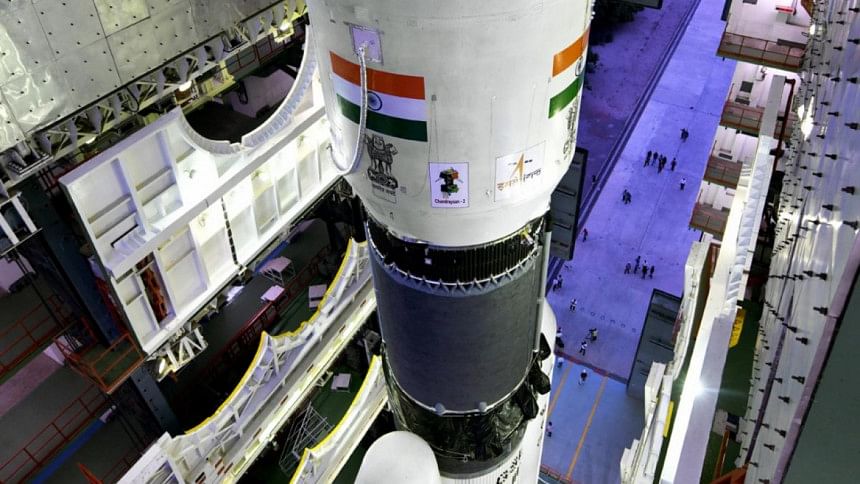India's Chandrayaan-2 to land on moon tomorrow

A month and half after its launch, India's second unmanned moon mission Chandrayaan-2 stands just hours away from its destination of landing where no country has gone before—the south pole of the lunar surface.
The lander, named Vikram after Vikram Sarabhai, considered the father of India's space programme, is expected to land early on Saturday morning, reports our New Delhi correspondent.
Indian Prime Minister Narendra Modi will be visiting the ISRO Headquarters at Bengaluru to witness the final descent, it was officially announced today.
Chandrayaan-2 spacecraft consisted of an orbiter, a lander and a rover. The lander separated from the orbiter, which continues to circle over the moon, on September 2 for the soft-landing on the moon which, if successful, will make India the fourth country after Russia, the US and China, to achieve the feat.
Landing softly on the moon is a complex task. Only 37% of such attempts have been successful.
No wonder Indian Space Research Organization (ISRO) Chairman Dr K Sivan described the landing as "the most terrifying" final 15 minutes part of the mission that took Chandrayaan 2 across a journey of 384,000 km since it was launched from India's space port in Sriharikota, Andhra Pradesh, on July 22.
Dr Sivan's use of the "most terrifying" description of the lander's final descent on the moon is primarily because it is the first time India is attempting soft-landing on the lunar surface.
With the exception of the crash-landing of the Israeli moon mission Beresheet just five months ago, all the failures of moon landing were before 1976. But technology has progressed since then and Indian ISRO has incorporated additional safety measures to deal with risks associated with landing on the moon.
ISRO scientists are confident because they have done extensive simulations of each event and ironed out all the wrinkles that could crop up during the lander's final touch-down.
Following is a timeline of the final descent of the lander:
A. Landing begins at 1:40 am Indian time at a velocity of 21, 600 km per hour.
B. A second later, the lander's engines are switched on to reduce its velocity.
C. Within 15 minutes, the lander's speed has to be brought down to seven km per hour to facilitate a soft landing
D. As the lander slows and moves nearer to the moon, it turns to align itself with the lunar surface.
E. The lander transmits the first pictures as it turns towards the moon. The orbiter, hovering 100 km above the moon's surface,will shift to take pictures of the landing.
F. The computer on board the lander scans the moon for a flat surface and makes adjustments in trajectory.
G. The lander's thrusters are shut off to prevent dust rising from surface of the moon.
H. The lander then chooses one of the two landing sites between two craters on the moon named Manzinus C and Simpelius N.
I.At 3:55 am Indian time, a ramp pops out of the lander.
J. At 5:05 am the rover's solar panels are deployed.
K. At 5:45 am the rover starts to exit the lander.
L. At 5:55 am the rover touches down on moon's surface to take pictures and start examining the lunar soil looking for presence of water and minerals.

 For all latest news, follow The Daily Star's Google News channel.
For all latest news, follow The Daily Star's Google News channel. 



Comments